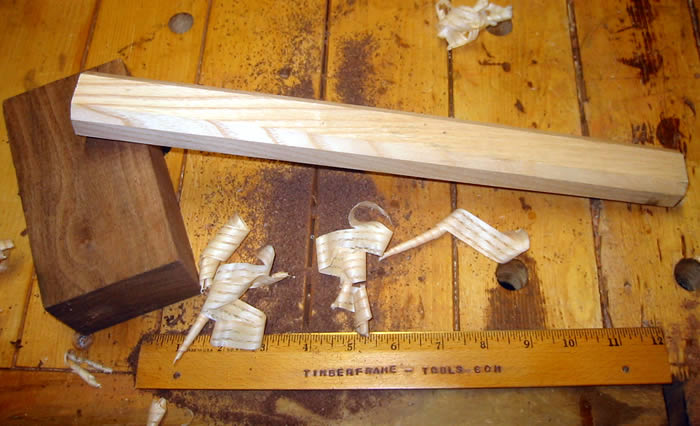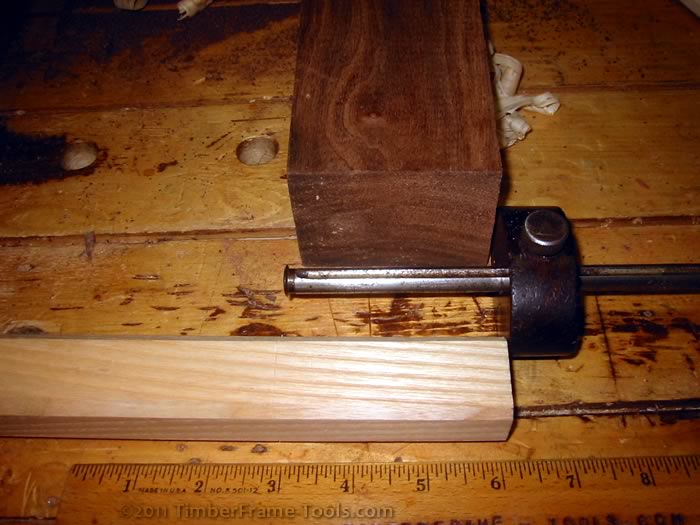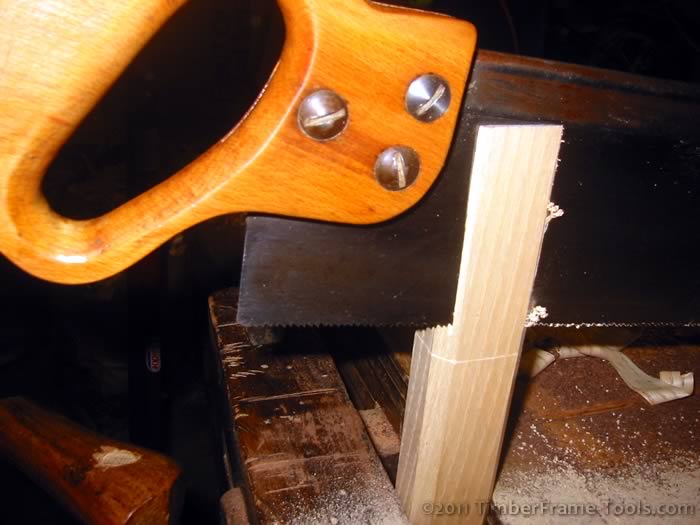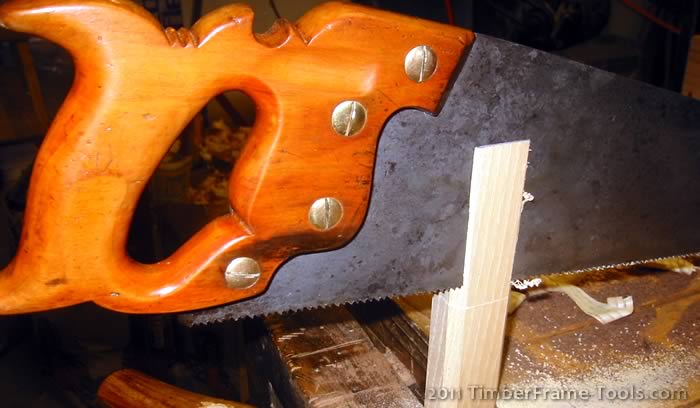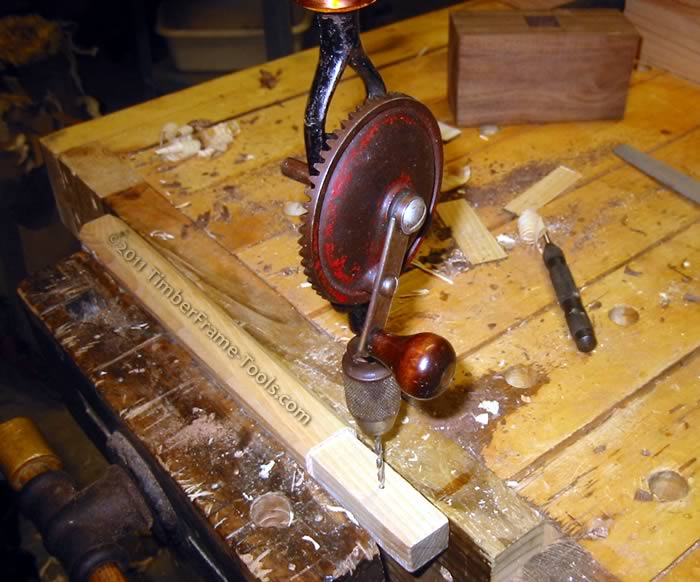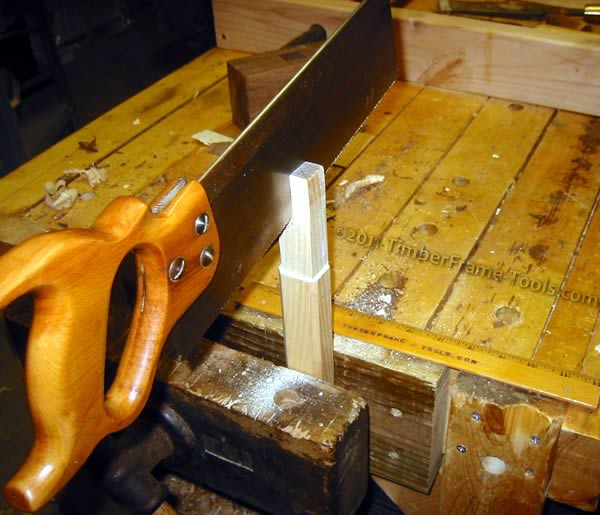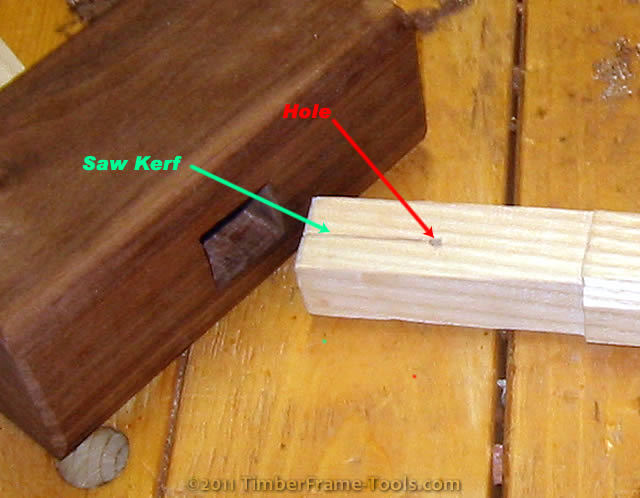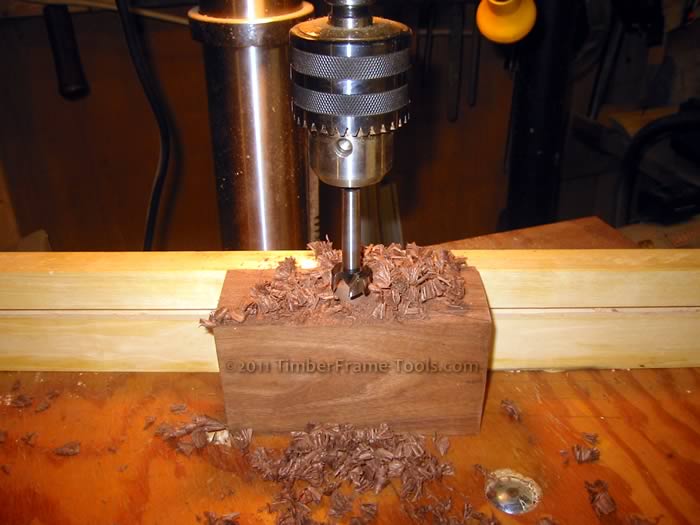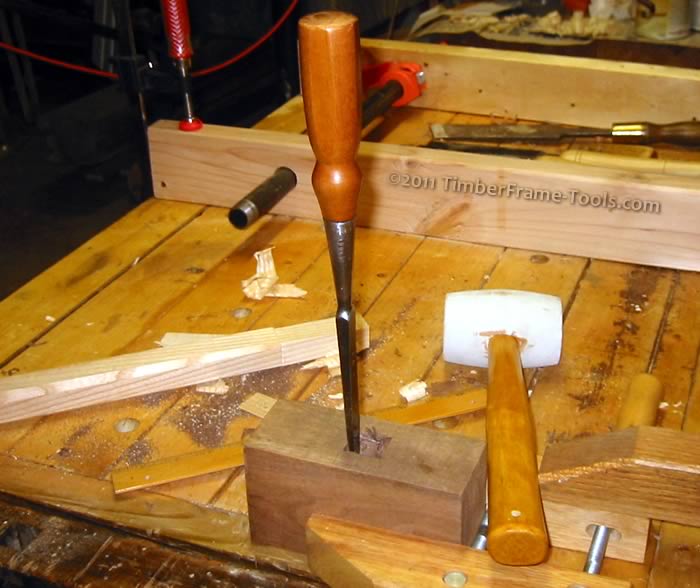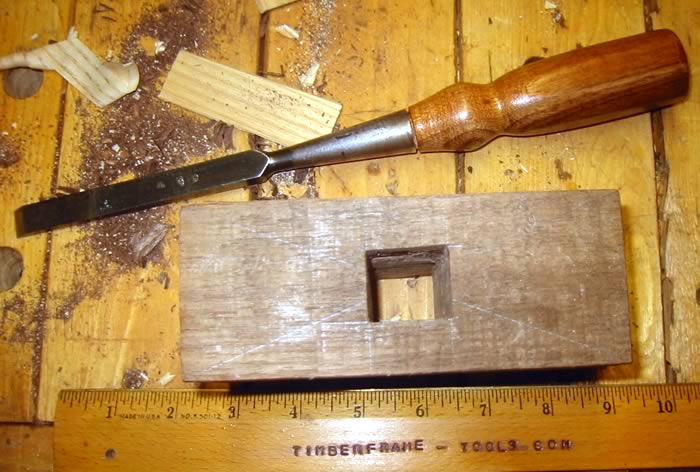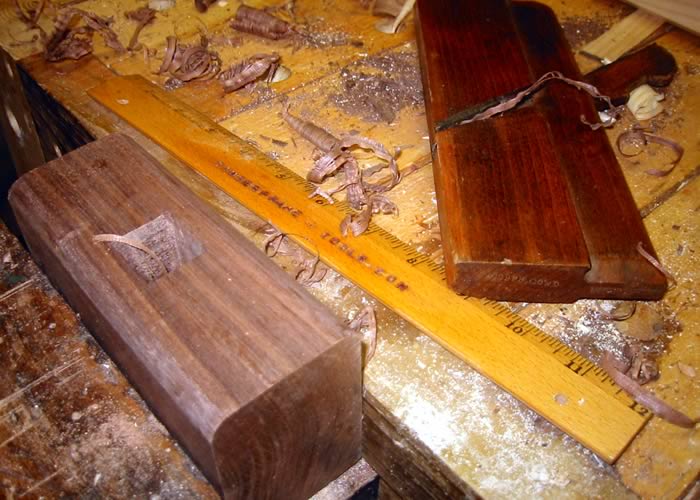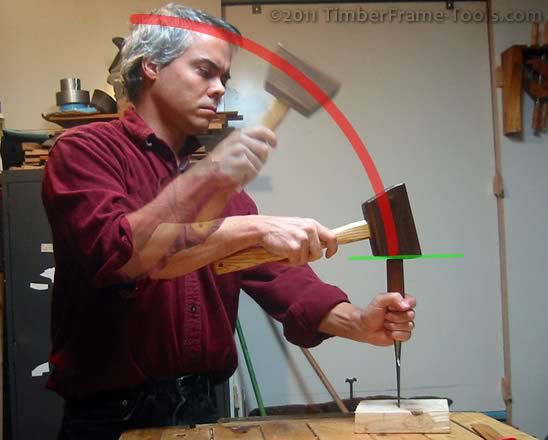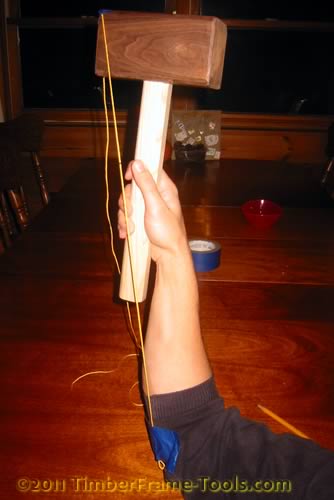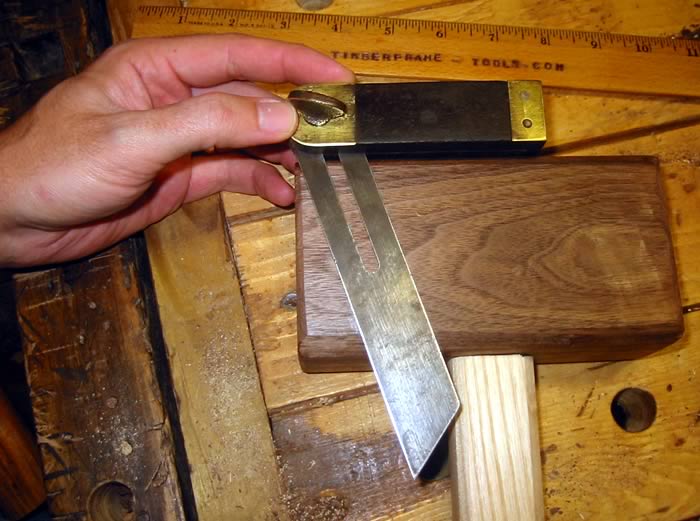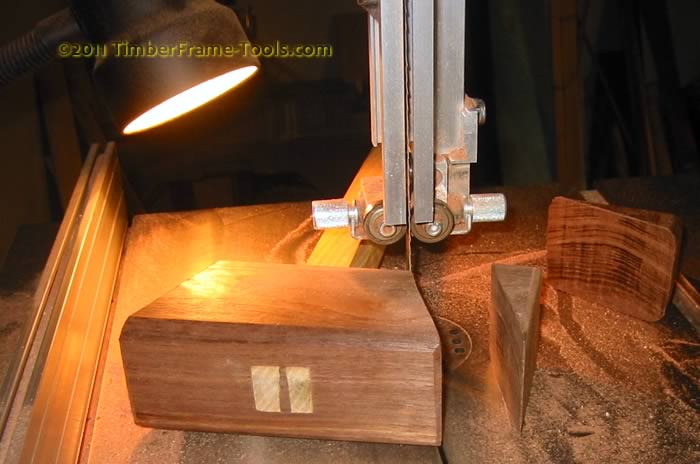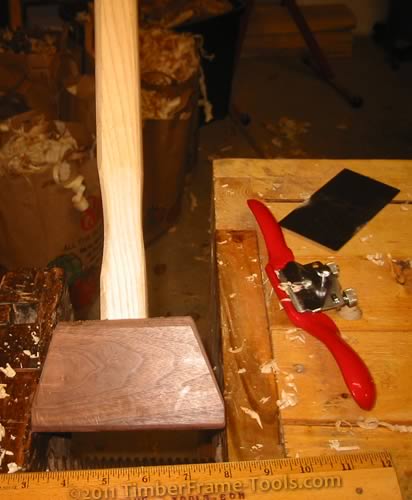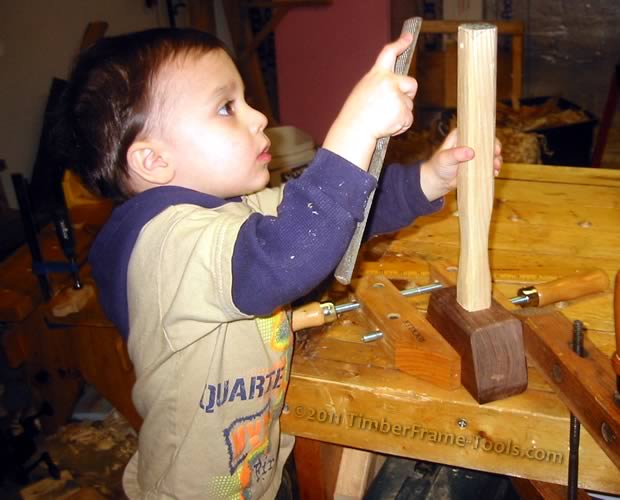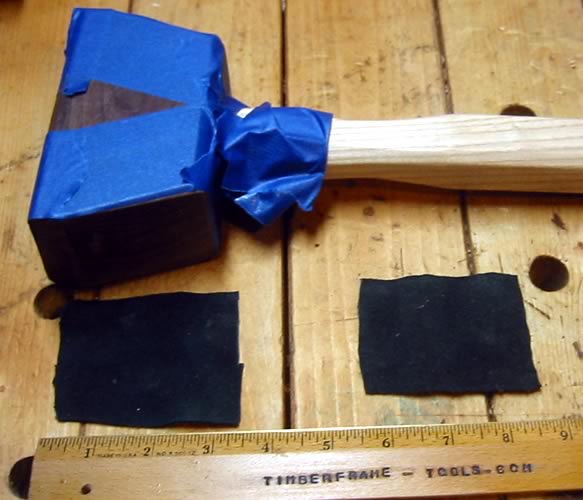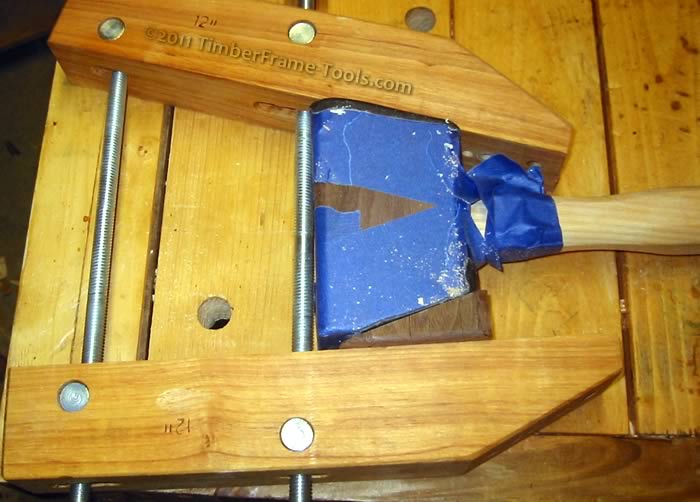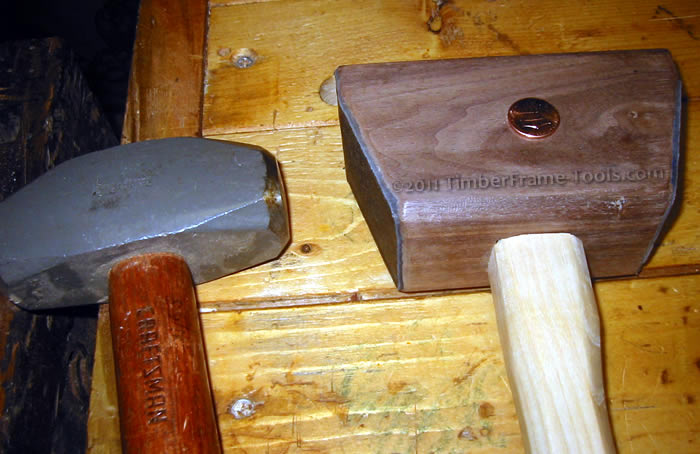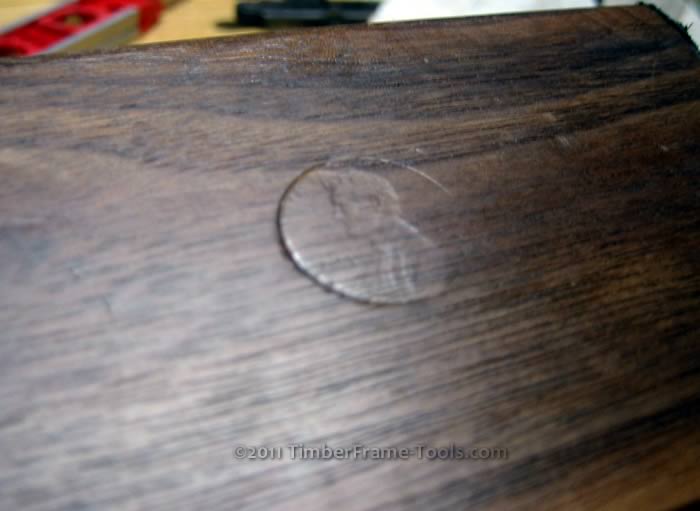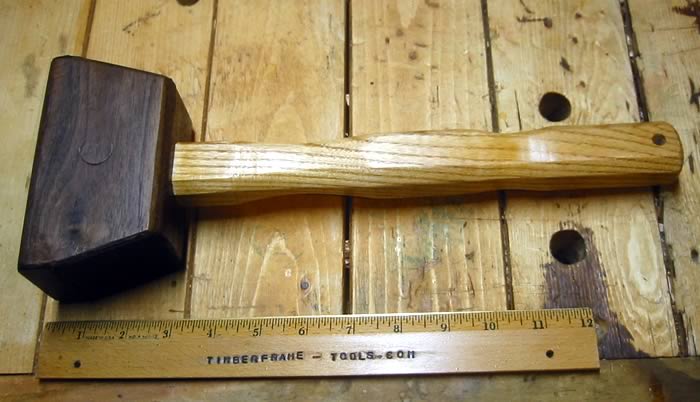I’ve seen this issue come up and get discussed on several forums. A joiners mallet is pretty simple to make, so it is a quick and satisfying shop project to get one constructed, but then the question arises, “what angle should be put on the head?” This is an important question with advice ranging from “we don’t need no stinking angle” to use the angle that allows it to sit flat on a bench. I discovered the answer to this question in a few old Timber Framing books. It makes sense that a Timber Framer would have the answer, as they do more chiseling than most woodworkers, and certainly heavier chiseling than all. I’ll get to the answer to how much angle it should have in a bit. First lets put a mallet together.
Constructing a Wood Mallet
Mallets are nice because they can be constructed from scraps in a short period of time. I had a scrap of white oak that I had intended for some chisel handles, but it turned out to be a bit thinner than I wanted, so I decided to use it for mallet handle. I had already shaped it to an octagon to prep it for the lathe when I decided to use it for a mallet handle instead. The corners being knocked off made it a little more challenging to lay out the cuts for the tenon on the handle, but nothing too difficult.
Oak and Walnut are probably not the best choices for a mallet. I’d much prefer a handle of Hickory and a head of Osage Orange or something with interlocking grain like Beech, but my scrap pile contains neither of these at the moment.
I set my marking gauge to a bit more than the height of the mallet head and used that to scribe a mark all the way around the handle. This defines the shoulder of the tenon. I want the handle to extend a bit beyond the mallet head so it can be planed flush once it is assembled.
With the shoulders marked, I mark the position of the tenon cheeks and scribe those on the end grain. I would have also scribed them on the sides, but I had already planed off the corners back when I thought this wood was destined to be a chisel handle.
With the shoulders and cheeks marked, I used a back saw, filed rip, to cut the cheeks.
As you can see, the back saw does not quite reach deep enough. I had to do the last view strokes with my small rip-saw. It really is perfect for this kind of thing.
With all the cheeks cut down to the shoulder line, I cut the shoulders with the crosscut side of my Ryoba. With the tenon all created, it was time to cut a relief for the wedge. I follow the safe practice of drilling a stop hole in the handle then sawing down to it to create the slot for the wedge. The stop hole helps prevent a split from running farther down the handle and weakening it.
With the stop hole defined, it is a relatively easy cut down the grain to meet the hole. It can be a little tricky to meet the hole on both sides of the cut. To ensure this happens, start the cut on the top corner but then lay the saw down so a surface cut is made with the teeth right to the hole. Then flip the handle around in the vise and repeat the same scoring cut. Being scored on both sides will almost guarantee that your saw will meet the hole as intended.
The final result should look like this.
On to laying out the mallet head. After making sure the mallet head sides are at right angles to each other, a few layout lines can be used to mark the center of the bottom. From there the handle tenon can be scribed onto the bottom of the mallet head. It is then pretty simple to use an undersized Forstner bit to remove the majority of the waste from the mortise.
The actual walls of the mortise get squared up with a chisel. Since the chopping is fairly heavy, I use a pair of handscrews to clamp the mallet head to the workbench top. This way the surface of the workbench takes the impact rather than the bench vise.
The mortise does flair out slightly from the midpoint toward the striking faces as you go toward the top of the mallet head. This gives a bit of safety to make sure the handle is wedged in securely once the wedge is driven in.
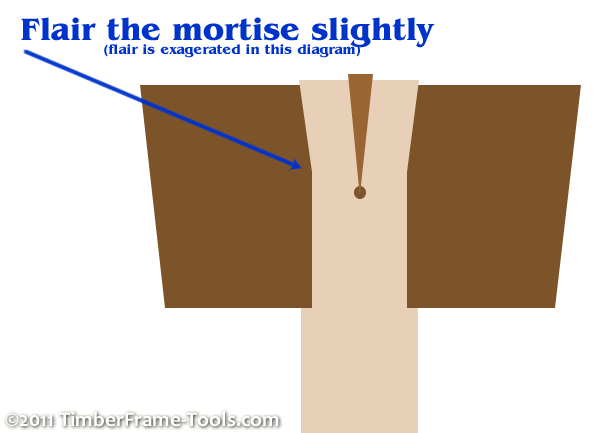
The flaired mortise on the hammer head keeps everything locked together securely once the wedge is driven in. Notice that the stop hole in the handle is beneath the flair in the mortise. This helps prevent any further splitting of the handle.
With the mortise complete, the handle can now be inserted. It should fit tight without the wedge, but not require more than a few taps to get it in place. The wedge will do the work of holding it in place.
I wanted rounded corners on the non-striking faces, so I ran an old hollow plane over the edged a few times until it had the shape I wanted.
At this point it was time to temporarily put it together and get a feel for where I wanted to grip the handle. Unfortunately, I got excited and in a momentary lapse of reason, I pounded the wedge all the way in. (Grrr that will make things difficult later on.)
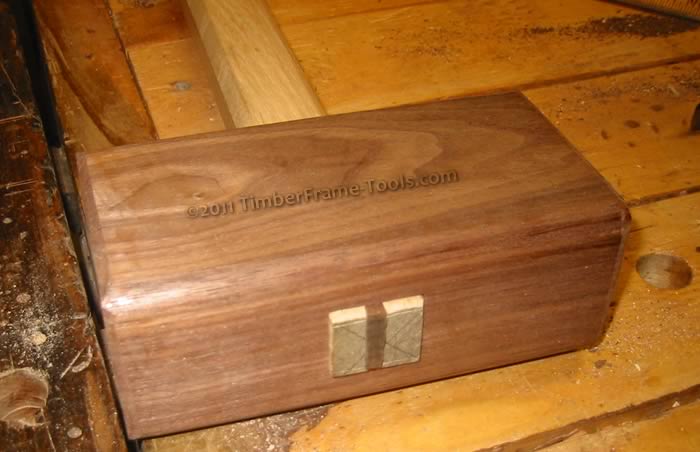
Don't drive the wedge in place until the absolute LAST step. After this I planed the tenon flush with to the top of the mallet head.
Stringing the Mallet for the Right Angle
Okay, so now that the basic construction is ready, it is time to get back to the main topic of “What is the proper angle for a mallet head?” The proper angle is based on the idea that a mallet is either swung in an arc from the wrist for light tapping or swung from the elbow for heavier chopping. The other possibility is that it is swung in an arc from the shoulder, but in most cases if you are swinging from the shoulder you are using a two handed approach with a long handle, like a sledge hammer. The basic idea is that any mallet travels in an arc before striking the handle of a chisel. When it strikes the chisel handle, you want the face to be square to the handle (math and physics people would say the chisel handle is “Normal” to the face of the mallet.. If the chisel handle is Normal, then the mallet does not twist and the chisel handle does not get deflected away off its line, which would skew the cut and result in a crooked mortise.
Fortunately, the method for finding the proper angle for YOUR mallet is easier than describing why it is the proper angle. I emphasize YOUR mallet because the angle is specific to both your mallet and your use of the mallet. You have to decide where you want to grip the mallet and how you plan to swing it. Typically chiseling is done from the elbow, but some fine detail work or carving can be done with the wrist. You can see in the diagram below how the geometry of the head would change based on whether you swing from the elbow or the wrist.
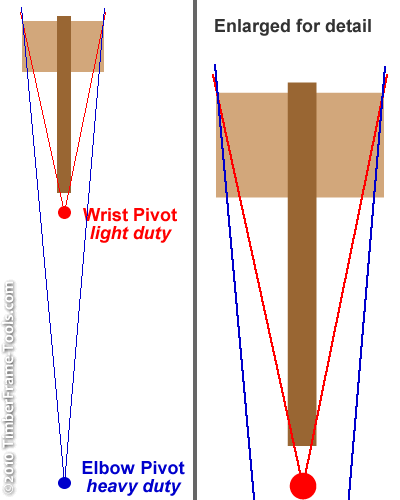
This shows the rough change in geometry and recommended angle based on whether you swing from the elbow or swing from the wrist.
The method for finding the proper angle for your mallet is simple. It requires only string and a couple of pieces of tape. Hold the mallet in your hand in the manner you imagine using it. Then tape one end of the string to the top corner of the mallet head. Now pull the string tight and tape it to your pivot point (either your elbow or the pivoting part of your wrist). Now simply make a pencil mark at the location that the string crosses the lower part of the head of the mallet. I do recommend you have someone else make the pencil mark so that you can concentrate on holding the mallet naturally.
With the pencil mark made where the string crosses the lower edge of the mallet, use a bevel gauge to match that angle and make the mark. Make the same mark on the other side of the mallet too.
At this point I would have simply just cut the angles with a handsaw, but my mistake of putting in the wedge prematurely made that difficult, so I opted for cutting them on the band saw.
I made sure to save the off-cuts as they will be helpful when it is time to glue the leather faces on.
Shaping the Mallet Handle
For this particular handle, I still wanted the octagon shape, but I also wanted the web of my hand along with my thumb and index finger to encounter a more slender waist. This it to help keep the handle from slipping out of my hands. This handle would actually have two hand-holds. One for ordinary chisel work and one for heavy chopping.
I used a curved soled spokeshave and a card scraper to get the handle into the shape I wanted. Again this would have been easier if I could have separated the handle from the mallet (don’t wedge it in until last).
After a bit of shaping, my son got to use a rasp to round over the end of the handle. Of course any rasping on his part simply can not be done without a few renditions of the Rasp Rap.
With the handle fully shaped, I planed off the sharp end of the face with a block plane and chamfered the other edges of the face. This creates a flat surface at the very head of the mallet that can be used for tapping joints together. I also planed the end grain faces smooth and used masking tape to mask off the portions of the mallet that might catch some over-spray when I use the spray on 3M 77 glue.
I sprayed the faces of the mallet and sprayed the back of the leather pieces. Let them just dry to tacky a few minutes, then pressed together and clamped them into a large 12″ handscrew using the off-cuts as cauls to hold the leather in place while the glue dried.
Once the glue had dried, I used an exact-o knife to cut the leather flush to the wood, and I chamfered the edge of the leather a bit to keep it from getting ragged.
To finish up the mallet I dated it by taking a 2010 penny (I built this in 2010) and using a piece of painters tape I taped it with Lincoln’s face and the date against the wood. The tape holds it in place while I whacked it solidly with a large hammer.
The image of Lincoln is solidly cast in 3D in the wood and the date is legible, but is a mirror image. Another option is to use an F-clamp to press the coin into the wood. State quarters are nice, but the year is not on the same side of the coin as the the state
With the mallet now complete, I wiped it with a few coats of orange shellac and put it to work.
I am sure many are looking at this mallet head and saying, “the angle looks too steep.” I agree it does look too steep, but when you swing it a few times at a chisel, you will realize, it is right where it is supposed to be.
I should point out that the angle for this mallet is only accurate when the mallet is held by the waist closest to the head of the mallet. When held at the lower waist, it has a tendency to deflect the chisel slightly toward my elbow. Ideally for a two grip hammer, I could have set one face angle to the short waist and the other face angle to the long waist, but I have a feeling that would make it confusing to use.
Wooden Mallet Resources
- A Simple Woodworking Mallet on WKFineTools – Simple and pretty easy to make, though notice that the angle on the head is not steep enough and you can see it deflecting the chisel in the photo.
- Scrap Wood Mallet in American Woodworker June ’92 – Shows the same angle determination I use.
- Making an Offset Mallet on WKFineTools – an interesting twist on using a lathe to make the mallet head angled
- Collection of Mallets on Lumberjocks – great for inspiration
- Making a Mallet on WoodnBits blog – this one is for planes, but it could be scaled up or scaled down easily.
- Deadblow Joiners mallet from woodworkingonline (PDF)
- Making the Perfect Carvers Mallet on WKFineTools
- Mallets for Sale
- Wooden Mallets for sale at Amazon.com
- Wood Mallets for sale at Woodcraft
- Mallets at Highland Woodworking
